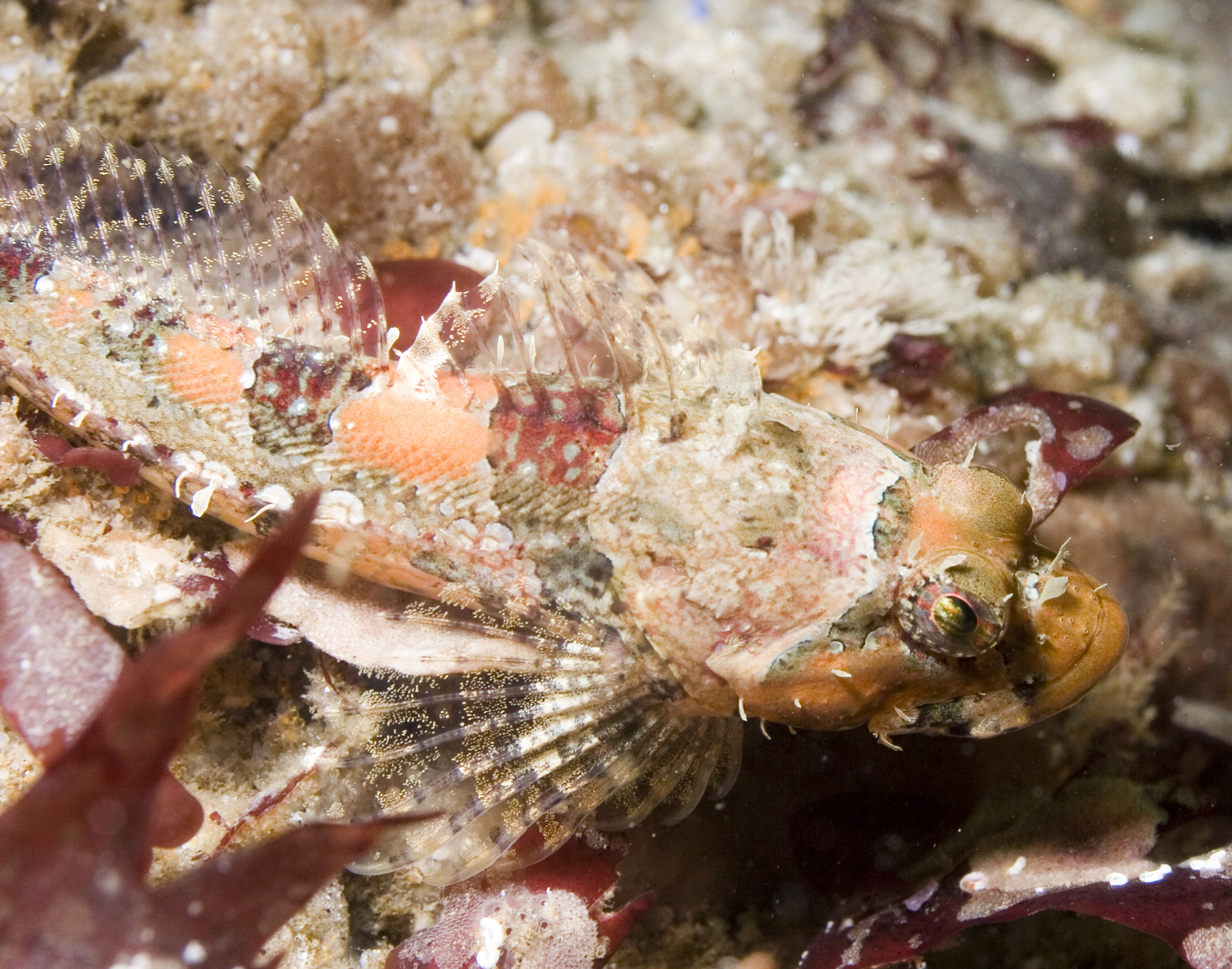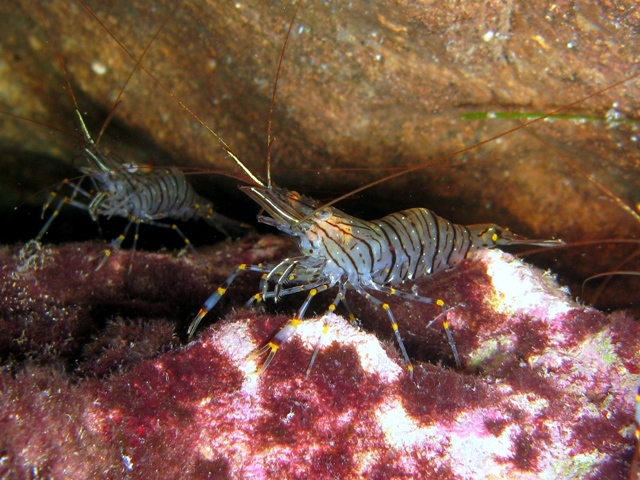|
Icelinus Filamentosus
The threadfin sculpin (''Icelinus filamentosus'') is a fish, mostly found in the Pacific waters of North America. A large, deep-water sculpin of the family Cottidae, it occurs in the North Pacific Ocean, from Chirikof Island in the western Gulf of Alaska to Point Loma and Cortez Bank, southern California, USA. Found at depths below 122 ft (35 m), and as deep as 2624 ft (800 m), little is known about this reclusive species. Description and life cycle A member of the ''Icelinus'' genus, the threadfin sculpin, like many others in its genus, has a large spine on the top of the preoperculum with antler-like points. They have a single spine and 2 soft rays in the pelvic fin and there are two rows of ctenoid scales along the dorsal fin bases. The body is overall light gray, with splotches of dark brown along the upper flank and head. There are between 9 and 11 dorsal spines, 15-18 dorsal soft rays, 13-15 anal soft rays, and 4 dark saddles across the back. The belly is light gr ... [...More Info...] [...Related Items...] OR: [Wikipedia] [Google] [Baidu] |
Sculpin
A sculpin is a type of fish that belongs to the superfamily Cottoidea in the order Scorpaeniformes.Kane, E. A. and T. E. Higham. (2012)Life in the flow lane: differences in pectoral fin morphology suggest transitions in station-holding demand across species of marine sculpin.''Zoology'' (Jena) 115(4), 223-32. As of 2006, this superfamily contains 7 families, 94 genera, and 387 species. Sculpins occur in many types of habitat, including ocean and freshwater zones. They live in rivers, submarine canyons, kelp forests, and shallow littoral habitat types, such as tidepools. Sculpins are benthic fish, dwelling on the bottoms of water bodies. Their pectoral fins are smooth on the upper edge and webbed with sharp rays along the lower edge, a modification that makes them specialized for gripping the substrate. This adaptation helps the fish anchor in fast-flowing water. The sculpin normally grows to about four inches long. Families and subfamilies Families include: * Jordaniidae ... [...More Info...] [...Related Items...] OR: [Wikipedia] [Google] [Baidu] |
Cottidae
The Cottidae are a family of fish in the superfamily Cottoidea, the sculpins. It is the largest sculpin family, with about 275 species in 70 genera.Kane, E. A. and T. E. Higham. (2012)Life in the flow lane: differences in pectoral fin morphology suggest transitions in station-holding demand across species of marine sculpin.''Zoology'' (Jena) 115(4), 223-32. They are referred to simply as cottids to avoid confusion with sculpins of other families. Cottids are distributed worldwide, especially in boreal and colder temperate climates. The center of diversity is the northern Pacific Ocean. Species occupy many types of aquatic habitats, including marine and fresh waters, and deep and shallow zones. A large number occur in near-shore marine habitat types, such as kelp forests and shallow reefs. They can be found in estuaries and in bodies of fresh water. Most cottids are small fish, under in length. The species ''Scorpaenichthys marmoratus'' can be up to in length.Froese, R. and D ... [...More Info...] [...Related Items...] OR: [Wikipedia] [Google] [Baidu] |
North Pacific Ocean
North is one of the four compass points or cardinal directions. It is the opposite of south and is perpendicular to east and west. ''North'' is a noun, adjective, or adverb indicating direction or geography. Etymology The word ''north'' is related to the Old High German ''nord'', both descending from the Proto-Indo-European unit *''ner-'', meaning "left; below" as north is to left when facing the rising sun. Similarly, the other cardinal directions are also related to the sun's position. The Latin word ''borealis'' comes from the Greek '' boreas'' "north wind, north", which, according to Ovid, was personified as the wind-god Boreas, the father of Calais and Zetes. ''Septentrionalis'' is from ''septentriones'', "the seven plow oxen", a name of '' Ursa Major''. The Greek ἀρκτικός (''arktikós'') is named for the same constellation, and is the source of the English word ''Arctic''. Other languages have other derivations. For example, in Lezgian, ''kefer'' c ... [...More Info...] [...Related Items...] OR: [Wikipedia] [Google] [Baidu] |
Icelinus
''Icelinus''is a genus of marine ray-finned fishes belonging to the Family (biology), family Cottidae, the typical sculpins. These fishes are found in the northern and eastern Pacific Ocean. Taxonomy ''Icelinus'' was first proposed as a monospecific genus in 1885 by the American ichthyologist David Starr Jordan with its only and type species being ''Artedius quadriseriatus''. This species had been Species description, described in 1880 by the English zoologist William Neale Lockington from San Francisco. The 5th edition of ''Fishes of the World'' classifies this genus within the subfamily Cottinae of the family Cottidae, however, other authors classify the genus within the subfamily Oligocottinae of the family Psychrolutidae. The genus ''Icelinus'' may not be monophyletic as a study found that the 9 eastern Pacific species were in a clade which was a sister taxon to the genera ''Furcina'' and ''Antipodocottus'' while the 2 northwestern Pacific species (''I. japonicus'' and ''I. pi ... [...More Info...] [...Related Items...] OR: [Wikipedia] [Google] [Baidu] |
Shrimp
Shrimp are crustaceans (a form of shellfish) with elongated bodies and a primarily swimming mode of locomotion – most commonly Caridea and Dendrobranchiata of the decapod order, although some crustaceans outside of this order are referred to as "shrimp". More narrow definitions may be restricted to Caridea, to smaller species of either group or to only the marine species. Under a broader definition, ''shrimp'' may be synonymous with prawn, covering stalk-eyed swimming crustaceans with long, narrow muscular tails ( abdomens), long whiskers ( antennae), and slender legs. Any small crustacean which resembles a shrimp tends to be called one. They swim forward by paddling with swimmerets on the underside of their abdomens, although their escape response is typically repeated flicks with the tail driving them backwards very quickly. Crabs and lobsters have strong walking legs, whereas shrimp have thin, fragile legs which they use primarily for perching.Rudloe & Rudloe (20 ... [...More Info...] [...Related Items...] OR: [Wikipedia] [Google] [Baidu] |
Isopods
Isopoda is an order of crustaceans that includes woodlice and their relatives. Isopods live in the sea, in fresh water, or on land. All have rigid, segmented exoskeletons, two pairs of antennae, seven pairs of jointed limbs on the thorax, and five pairs of branching appendages on the abdomen that are used in respiration. Females brood their young in a pouch under their thorax. Isopods have various feeding methods: some eat dead or decaying plant and animal matter, others are grazers, or filter feeders, a few are predators, and some are internal or external parasites, mostly of fish. Aquatic species mostly live on the seabed or bottom of freshwater bodies of water, but some taxa can swim for a short distance. Terrestrial forms move around by crawling and tend to be found in cool, moist places. Some species are able to roll themselves into a ball as a defense mechanism or to conserve moisture. There are over 10,000 identified species of isopod worldwide, with around ... [...More Info...] [...Related Items...] OR: [Wikipedia] [Google] [Baidu] |
Fauna Of The Aleutian Islands
The Aleutian Islands ( ; ; ale, Unangam Tanangin, "land of the Aleuts"; possibly from the Chukchi ''aliat'', or "island")—also called the Aleut Islands, Aleutic Islands, or, before 1867, the Catherine Archipelago—are a chain of 14 main, larger volcanic islands and 55 smaller ones. Most of the Aleutian Islands belong to the U.S. state of Alaska, with the archipelago encompassing the Aleutians West Census Area and the Aleutians East Borough. The Commander Islands, located further to the west, belong to the Russian federal subject of Kamchatka Krai, of the Russian Far East. The islands form part of the Aleutian Arc of the Northern Pacific Ocean, and occupy a land area of 6,821 sq mi (17,666 km2) that extends westward roughly from the Alaskan Peninsula mainland, in the direction of the Kamchatka Peninsula; the archipelago acts as a border between the Bering Sea to the north and the Pacific Ocean to the south. Crossing longitude 180°, at which point east and west longi ... [...More Info...] [...Related Items...] OR: [Wikipedia] [Google] [Baidu] |
Western North American Coastal Fauna
Western may refer to: Places *Western, Nebraska, a village in the US *Western, New York, a town in the US *Western Creek, Tasmania, a locality in Australia *Western Junction, Tasmania, a locality in Australia *Western world, countries that identify with shared "Western" culture Arts and entertainment Films * ''Western'' (1997 film), a French road movie directed by Manuel Poirier * ''Western'' (2017 film), a German-Austrian film Genres *Western (genre), a category of fiction and visual art centered on the American Old West **Western fiction, the Western genre as featured in literature **Western music (North America), a type of American folk music Music * ''Westerns'' (EP), an EP by Pete Yorn * WSTRN, a British hip hop group from west London Business * The Western, a closed hotel/casino in Las Vegas, United States *Western Cartridge Company, a manufacturer of ammunition *Western Publishing, a defunct publishing company Educational institutions *Western Washington University ... [...More Info...] [...Related Items...] OR: [Wikipedia] [Google] [Baidu] |


.jpg)
